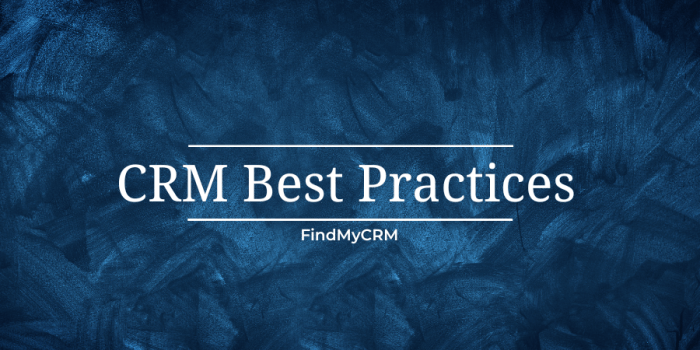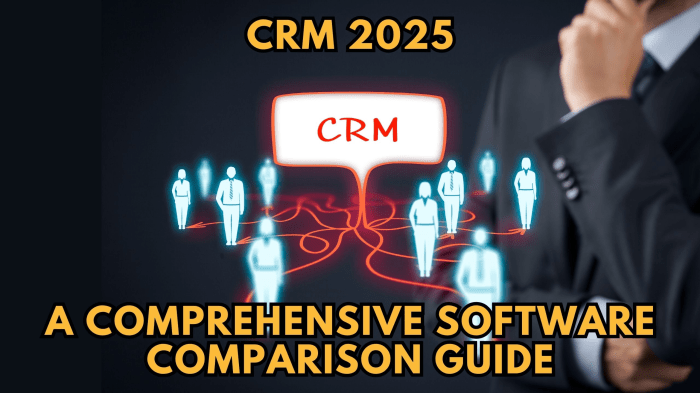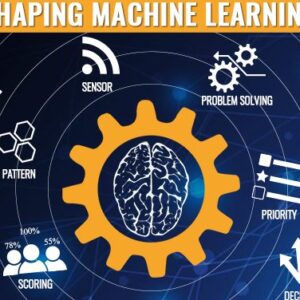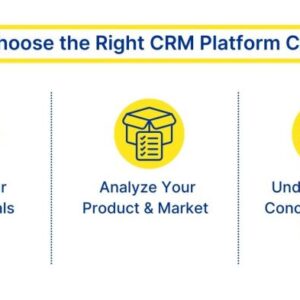5 CRM Best Practices Every Business Should Adopt in 2025? Think of it as your secret weapon for conquering the chaotic world of customer relationships. In 2025, simply *existing* isn’t enough; you need to *thrive*. This means leveraging technology to not just manage, but *master* your customer interactions. We’re talking about personalized experiences, streamlined workflows, and data-driven decisions that’ll leave your competitors in the dust.
This isn’t about adding another tool to your arsenal; it’s about strategically implementing a CRM system that fuels your business growth. We’ll dive deep into five essential best practices—from harnessing the power of data analytics to automating tedious tasks and fostering seamless team collaboration. Get ready to level up your customer relationship game and prepare for a future where efficiency and personalization reign supreme.
Data-Driven Decision Making
In 2025, the sheer volume of data generated by businesses is overwhelming. But for those who can harness it, CRM data offers a powerful competitive edge. Real-time insights transform guesswork into strategic action, allowing businesses to anticipate customer needs and optimize operations for maximum impact. This section explores how leveraging CRM data fuels smart decision-making.
Real-time CRM data significantly enhances strategic business decisions in 2025 by providing an up-to-the-minute understanding of customer behavior, sales performance, and marketing effectiveness. This allows businesses to react swiftly to changing market trends and customer preferences, maximizing opportunities and minimizing risks. Imagine, for example, identifying a sudden drop in engagement from a specific customer segment – real-time CRM data allows for immediate intervention, preventing further loss and potentially identifying the root cause of the decline. This proactive approach, fueled by data, is the key to success in a dynamic market.
Key Performance Indicators (KPIs) for CRM Analysis
Tracking and analyzing the right KPIs within a CRM system is crucial for effective decision-making. These metrics provide a quantifiable measure of progress toward business goals and allow for the identification of areas needing improvement. Focusing on a select few key indicators ensures that efforts are concentrated where they will have the most impact.
Using CRM Data for Personalized Customer Interactions and Improved Sales Conversion Rates
CRM data isn’t just for number crunching; it’s the key to understanding individual customers. By analyzing customer interactions, purchase history, and preferences, businesses can personalize marketing messages, product recommendations, and customer service interactions. This tailored approach significantly improves customer engagement and loyalty, leading to higher sales conversion rates. For example, segmenting customers based on their purchase history allows for targeted email campaigns offering relevant products or discounts, increasing the likelihood of a sale. Similarly, understanding customer preferences allows for personalized service interactions that build stronger relationships and increase customer satisfaction.
Comparison of CRM Reporting Features
| Feature | Benefits | Implementation Difficulty | Cost |
|---|---|---|---|
| Standard Reporting | Provides basic insights into sales, marketing, and customer service performance. Easy to understand and use. | Low | Low |
| Customizable Dashboards | Allows users to create personalized views of key metrics, tailoring the information to specific needs. Provides a more holistic view of performance. | Medium | Medium |
| Predictive Analytics | Utilizes machine learning to forecast future trends, such as customer churn or sales growth. Enables proactive decision-making. | High | High |
| Real-time Reporting | Provides immediate access to up-to-the-minute data, allowing for swift responses to changing conditions. Crucial for timely decision-making. | Medium-High | Medium-High |
Automation and Efficiency

Source: findmycrm.com
Let’s be real, nobody wants to spend their precious workday drowning in manual data entry. In 2025, a CRM system that doesn’t automate is practically a dinosaur. Efficiency is king, and CRM automation is the crown. It’s about freeing up your team to focus on what truly matters: building relationships and closing deals.
CRM automation streamlines sales processes by automating repetitive tasks, freeing up your sales team to focus on higher-value activities like building relationships with clients and closing deals. Imagine a world without manually updating contact information, scheduling follow-ups, or sending generic emails. That’s the power of automation. By integrating your CRM with other business applications, you create a powerful ecosystem where data flows seamlessly, improving accuracy and efficiency across the board. Think of it as a well-oiled machine, with every part working in perfect harmony.
CRM Integration Benefits
Integrating your CRM with other business applications, such as marketing automation platforms and email marketing services, creates a powerful synergy. This integration allows for automated lead nurturing, personalized email campaigns, and real-time data synchronization. For instance, a new lead captured through a marketing campaign can automatically be added to your CRM, triggering a series of automated follow-up emails and tasks assigned to the appropriate sales representative. This seamless flow of information ensures that no lead slips through the cracks and maximizes conversion rates. The result? A more efficient and effective sales process that boosts your bottom line.
Automated Workflows for Improved Efficiency
Several automated workflows can be implemented to drastically improve efficiency. For example, imagine an automated workflow triggered when a lead visits your website. This could automatically add the lead to your CRM, send them a welcome email, and schedule a follow-up call. Another example could be an automated email sequence sent to customers after a purchase, offering support and potentially upselling related products. These automated workflows not only save time but also ensure consistent communication and a positive customer experience. Think of it as having a dedicated virtual assistant managing your sales pipeline 24/7.
Prioritized Automation Features for 2025
Businesses should prioritize these automation features in their CRM systems to stay ahead of the curve in 2025:
- Automated Lead Scoring and Qualification: Automatically prioritize leads based on pre-defined criteria, ensuring sales teams focus on the most promising prospects.
- Automated Email Marketing Campaigns: Send personalized email sequences based on lead behavior and engagement, nurturing leads and boosting conversion rates. Think targeted emails based on website activity or purchase history.
- Automated Task Assignment and Reminders: Automatically assign tasks to the appropriate team members and send timely reminders, ensuring that no action item falls through the cracks.
- Automated Reporting and Analytics: Generate real-time reports and dashboards that provide insights into sales performance, allowing for data-driven decision-making and process optimization.
- Automated Social Media Integration: Connect your CRM to social media platforms to track social mentions, manage social selling efforts, and automatically update customer profiles.
Customer Relationship Management (CRM) Personalization
In today’s hyper-competitive market, generic marketing strategies simply won’t cut it. Customers crave personalized experiences, and a robust CRM system is the key to unlocking this potential. By leveraging the data within your CRM, you can move beyond mass messaging and cultivate meaningful, one-on-one relationships that drive loyalty and boost your bottom line. This means understanding your customers on a deeper level and tailoring your interactions to their individual needs and preferences.
CRM personalization isn’t just about adding a customer’s name to an email; it’s about creating a seamless, tailored experience across every touchpoint. This involves understanding their purchase history, browsing behavior, and even their social media activity to craft highly targeted messaging and offers. The payoff? Increased engagement, higher conversion rates, and stronger customer lifetime value.
Segmenting Customers for Personalized Communication
Effective personalization begins with segmentation. Your CRM allows you to group customers based on shared characteristics, allowing you to deliver targeted messages that resonate. Think about segmenting based on demographics (age, location, gender), purchasing behavior (frequency, value, product category), and engagement levels (website activity, email opens). For example, you might segment your customers into “high-value,” “loyal,” “at-risk,” and “new” categories, each requiring a different communication strategy. A high-value customer might receive exclusive offers and personalized service, while an at-risk customer might receive a targeted retention campaign.
Examples of Personalized Customer Journeys
Imagine an e-commerce store using CRM data to personalize the shopping experience. A customer browsing hiking boots might receive personalized product recommendations based on their previous purchases and browsing history. Following a purchase, they might receive a follow-up email with styling tips and care instructions, reinforcing the brand connection. Later, they could receive an email highlighting a sale on related accessories, furthering engagement and driving additional purchases. This targeted approach is far more effective than sending generic promotional emails to your entire customer base. Similarly, a SaaS company might use CRM data to trigger personalized onboarding emails and tutorials based on a customer’s specific plan and usage patterns, ensuring a smoother transition and maximizing product adoption.
Personalization Techniques and Their Impact
| Personalization Technique | Implementation | Impact on Customer Engagement | Example |
|---|---|---|---|
| Personalized Email Marketing | Using CRM data to segment audiences and tailor email content, subject lines, and calls to action. | Increased open rates, click-through rates, and conversions. | Sending a welcome email with a personalized discount code based on the customer’s signup source. |
| Product Recommendations | Leveraging purchase history and browsing behavior to suggest relevant products. | Increased average order value and customer lifetime value. | Recommending complementary products to customers based on their past purchases. |
| Targeted Advertising | Using CRM data to create custom audiences for online advertising campaigns. | Improved ad targeting and higher conversion rates. | Showing ads for specific products or services to customers who have shown interest in similar items. |
| Personalized Website Content | Tailoring website content, such as product descriptions and offers, based on customer segments. | Improved website experience and increased engagement. | Displaying different website banners and promotions based on the customer’s location or past purchases. |
Team Collaboration and Communication: 5 CRM Best Practices Every Business Should Adopt In 2025
In today’s fast-paced business environment, seamless collaboration is crucial for success. A CRM system acts as a central hub, breaking down communication silos and fostering a more efficient, coordinated approach across sales, marketing, and customer service teams. This leads to improved customer experiences and ultimately, increased revenue.
A well-implemented CRM system significantly improves team communication and knowledge sharing, leading to better customer service and increased sales. This is achieved through features designed to facilitate information flow and transparency.
CRM Features Enhancing Team Communication
CRM systems offer several features specifically designed to boost team communication and knowledge sharing. These features move beyond simple email chains, providing a structured and accessible platform for all relevant information. For instance, shared calendars allow for easy scheduling of meetings and appointments, ensuring everyone is on the same page regarding customer interactions. Centralized customer profiles provide a single source of truth, eliminating the need for teams to search across multiple platforms for vital information. Integrated communication tools, like built-in chat functions, allow for quick and easy communication between team members, while shared notes and activity feeds keep everyone informed of progress and updates. Document sharing capabilities ensure everyone has access to the necessary resources, streamlining processes and reducing errors.
Tracking Team Performance and Identifying Areas for Improvement
CRM systems provide robust reporting and analytics capabilities, enabling businesses to track team performance and identify areas for improvement. By monitoring key metrics like response times, conversion rates, and customer satisfaction scores, managers gain valuable insights into team effectiveness. This data-driven approach allows for targeted interventions, ensuring that resources are allocated strategically and performance is consistently optimized. For example, if the sales team’s conversion rate is consistently low, the CRM data might highlight a need for additional sales training or a refinement of the sales process. Similarly, slow response times in customer service might indicate a need for additional staffing or improved workflow processes. The CRM’s analytics dashboard provides a clear overview of team performance, allowing for timely adjustments and proactive problem-solving.
Workflow for Handling Customer Inquiries
Effective workflow management is crucial for efficient customer service. A CRM system streamlines this process by automating tasks and ensuring clear communication between teams. Consider this example of handling a customer inquiry across sales, marketing, and customer service:
A customer submits an inquiry through the company website. The CRM automatically assigns the inquiry to the customer service team. The customer service representative addresses the immediate concern and updates the customer’s profile in the CRM. If the inquiry requires input from the sales team (e.g., a product inquiry), the customer service representative assigns the inquiry to the appropriate sales representative via the CRM’s task management feature. The sales representative follows up with the customer, updating the CRM with their interaction. Finally, if the inquiry relates to a marketing campaign, the customer service representative notifies the marketing team via the CRM, providing relevant details. All communication and actions are recorded within the CRM, creating a complete audit trail.
Integration with Other Business Tools
In today’s hyper-connected business world, a standalone CRM is like a lone wolf – powerful, but ultimately limited. To truly unlock its potential, your CRM needs to play nicely with other essential business tools. Seamless integration isn’t just a nice-to-have; it’s a necessity for maximizing efficiency, gaining deeper customer insights, and achieving sustainable growth in 2025. Think of it as building a well-oiled machine, where each part works in perfect harmony with the others.
The beauty of CRM integration lies in its ability to break down data silos and create a unified view of your customer. This holistic perspective allows for more informed decision-making, streamlined workflows, and ultimately, happier customers. Let’s explore the various integration options and their benefits.
CRM Integration Options in 2025
The modern business landscape offers a plethora of integration methods. Direct API integrations offer the most robust and flexible connections, allowing for real-time data synchronization between systems. Pre-built connectors, often provided by CRM vendors or third-party developers, offer a quicker, more user-friendly setup for common integrations. Finally, ETL (Extract, Transform, Load) processes can handle more complex data transformations and migrations between systems, though they may require more technical expertise. Choosing the right method depends on your specific needs, technical capabilities, and budget. For instance, a small business might opt for pre-built connectors for marketing automation, while a larger enterprise might leverage APIs for more extensive and customized integrations.
Benefits of Integrating CRM with Other Business Tools
Integrating your CRM with marketing automation, sales intelligence, and customer support tools dramatically enhances your operational efficiency and customer understanding. Marketing automation tools, when integrated, allow for personalized email campaigns triggered by CRM events, like a customer’s purchase history or website activity. Sales intelligence tools provide richer customer profiles, including firmographic data and social media insights, enriching your CRM with valuable context for sales teams. Finally, integration with customer support tools ensures seamless handover of customer interactions, providing agents with a complete history of past interactions and resolving issues more efficiently. This integrated approach creates a more cohesive and effective customer journey. For example, a customer contacting support might trigger an automated email sequence offering additional resources or a follow-up call based on their issue.
Managing Data Consistency and Security Across Integrated Systems, 5 CRM Best Practices Every Business Should Adopt in 2025
Data consistency and security are paramount when integrating multiple systems. Establishing clear data governance policies, including data mapping and validation rules, is crucial to ensure data accuracy and integrity across all integrated systems. Regular data audits help identify and resolve inconsistencies. On the security front, robust authentication and authorization mechanisms are essential to protect sensitive customer data. Encryption of data in transit and at rest, along with regular security assessments, are vital components of a secure integrated system. Failure to prioritize data security can lead to significant financial and reputational damage.
Ideal Integration Flow: A Visual Description
Imagine a central hub, representing your CRM, connected to several spokes. One spoke represents your marketing automation platform. Data flows from the CRM (customer demographics, purchase history, engagement levels) to the marketing platform, enabling targeted campaigns. The platform then sends back campaign performance data (open rates, click-through rates, conversions) to the CRM, providing valuable feedback and insights. Another spoke connects to your sales intelligence platform. This platform feeds valuable prospect information (company size, industry, key decision-makers) into the CRM, enriching lead profiles and improving sales targeting. A third spoke connects to your customer support ticketing system. Customer interactions and resolution details flow back to the CRM, creating a complete history of each customer interaction. This constant two-way flow of data between the CRM and other tools provides a single source of truth for customer information, improving operational efficiency, personalization efforts, and overall customer satisfaction. For example, a customer’s negative feedback in the support system can trigger a proactive outreach from the sales team to address the issue and prevent churn.
Closing Notes

Source: subscribed.fyi
So, there you have it—five game-changing CRM best practices to propel your business into 2025 and beyond. Remember, it’s not just about adopting the latest tech; it’s about using it strategically to understand your customers better, improve internal processes, and ultimately, boost your bottom line. By embracing these strategies, you’re not just investing in a CRM; you’re investing in the future of your business. Now go forth and conquer!



